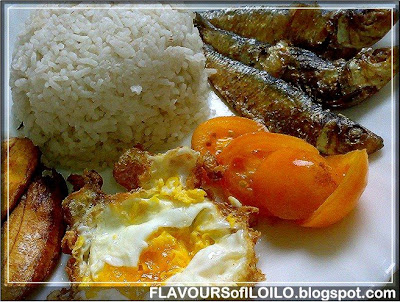
10 entries vie for ‘Pamahaw’ contest
By Maricar M. Calubiran from TheNewsToday
NOTE: Photos are not part of the news article
Ten final entries in the search for typical authentic Ilonggos breakfast will compete in the cooking competition dubbed as “Pamahaw” or Ilonggo breakfast this coming Saturday, July 25. The 10 entries will compete in the two categories, the open category and student category.
In the open category, the cooking battle will center on the recipes, namely,
- “Milkfish with Love (Bangus con Gugma)” of Norma Celiz from Barangay Ungka, Jaro;
- “Arroz Carrajuevo” of Darrly Jake Enarte from Villa Hermosa Subdivision, La Paz;
- “Ilodoco with Bagoong Rice (Iloilo Itlog Adobo)” of Noe Estrella from Leon;
- “Umbok-umbok” of Mark Anthony Beup from Fajardo Street, Jaro; and
- “Unwrapped Lumpiang Ubod with Peanut Sauce” of Dennis Damasco from Concordia Street, Jaro.
The student category entries areas follows;
- “Tulingan sa Gata at Batuan” of Vohn Johber Ticzon;
- “Guma-a with Kalkag Rice” of Angel Marie Medel;
- “Toasted Pandesal ni Paa served with Whipped Butter and Trappist Guava Jelly, Fried Molo Balls, Guimaras Fresh Mango and Native Chocolate Drink” of Jerrica Bianca Tan;
- “Linupak Layered Rootcrops served with Pulot” of Decerre Dy; and
- “Bino-otan nga Pangat” of Jason Philip Jacomille
Only five entries per category passed the rigorous selection process. Iloilo City will have its own version of battle of the chefs which aims to come up with a menu distinctly Ilonggo using locally grown ingredients. Pamahaw is an Ilonggo term for breakfast and it also means snack. City Tourism Development Office (CTDO) head Ben Jimena said the participants must observe the rules in the cooking contest. The menu must be healthy, nutritious and comestible. It must also be easy to cook, affordable and low-priced.The menu is easy to cook and affordable without sacrificing its nutritional content.
City Tourism Development Office (CTDO) head Ben Jimena said the participants must observe the rules in the cooking contest. The menu must be healthy, nutritious and comestible. It must also be easy to cook, affordable and low-priced.The menu is easy to cook and affordable without sacrificing its nutritional content.  The search for pamahaw, was initiated by the CTDO in cooperation the Iloilo Convention and Visitors Bureau (ICVB), Iloilo Hotels Restaurants Resorts Association (IHRRA), media partners, Robinsons Place Iloilo, schools offering HRM, Tourism, and Culinary Arts subjects or courses.
The search for pamahaw, was initiated by the CTDO in cooperation the Iloilo Convention and Visitors Bureau (ICVB), Iloilo Hotels Restaurants Resorts Association (IHRRA), media partners, Robinsons Place Iloilo, schools offering HRM, Tourism, and Culinary Arts subjects or courses. The IHRRA and ICVB members will promote the winning Ilonggo Breakfast in their establishments as part of the menu – but not modified – side by side with the American and Filipino bill of fare. The search for Pamahaw is another tourism related activity for Iloilo City which is known for its delicious food.
The IHRRA and ICVB members will promote the winning Ilonggo Breakfast in their establishments as part of the menu – but not modified – side by side with the American and Filipino bill of fare. The search for Pamahaw is another tourism related activity for Iloilo City which is known for its delicious food.
The cooking contest will be held at 2 p.m. at Robinsons Place Iloilo. 
